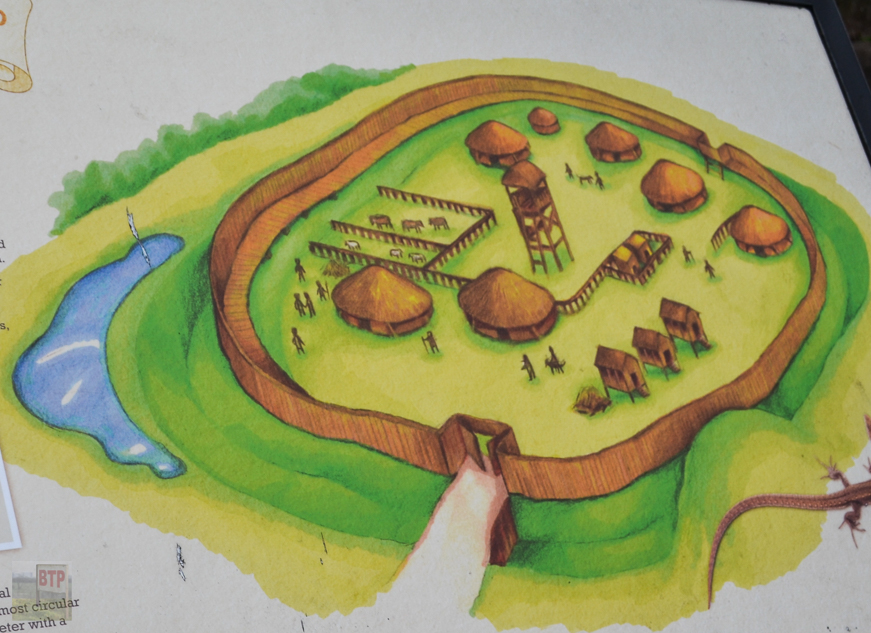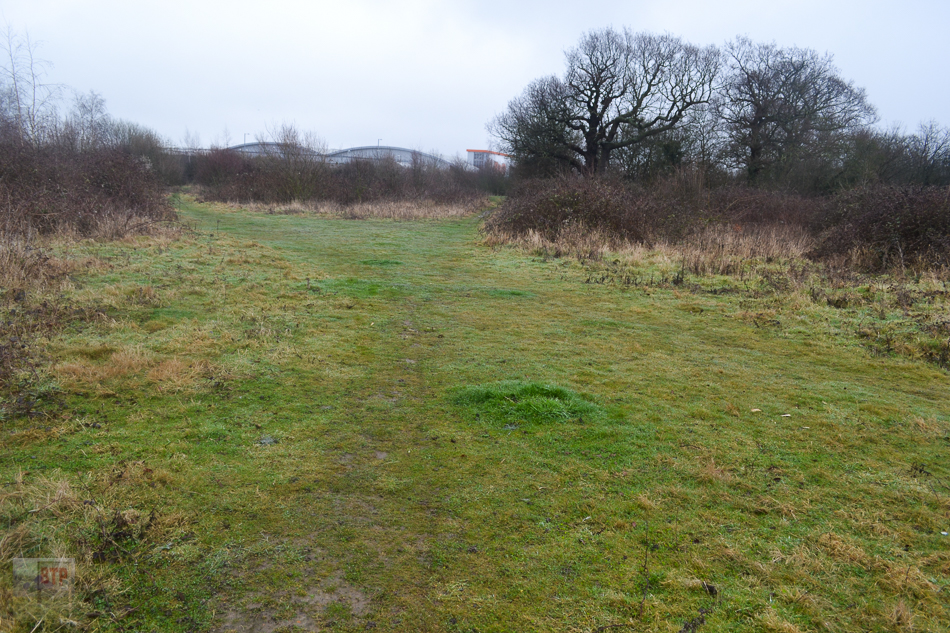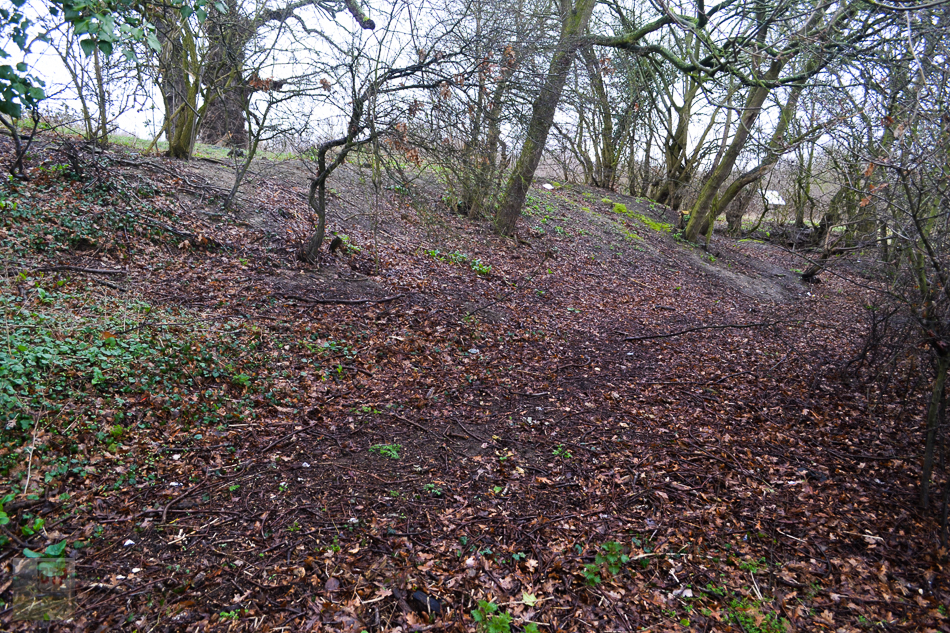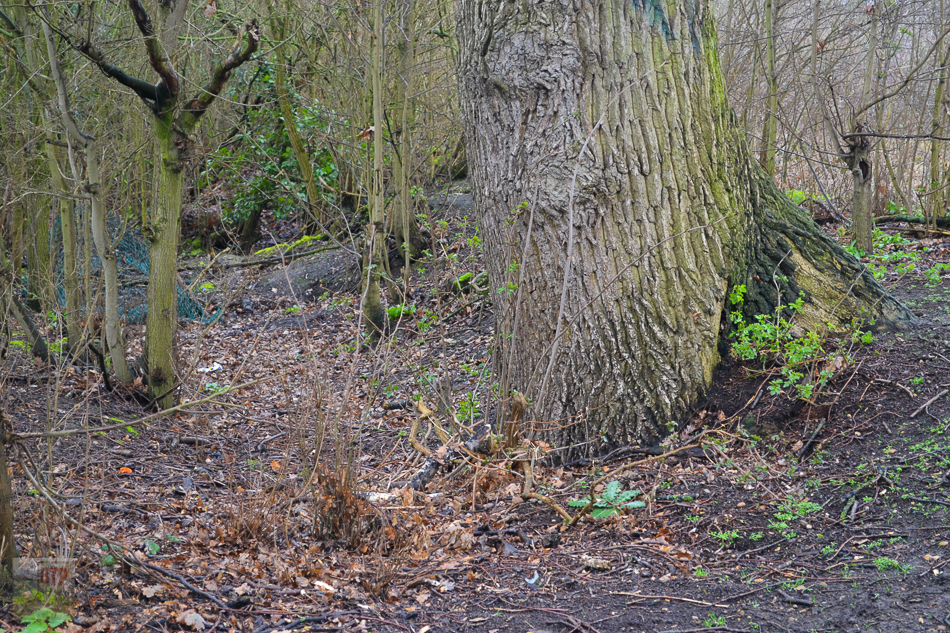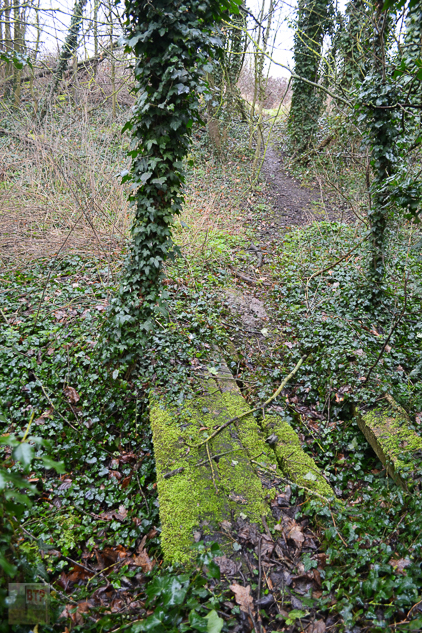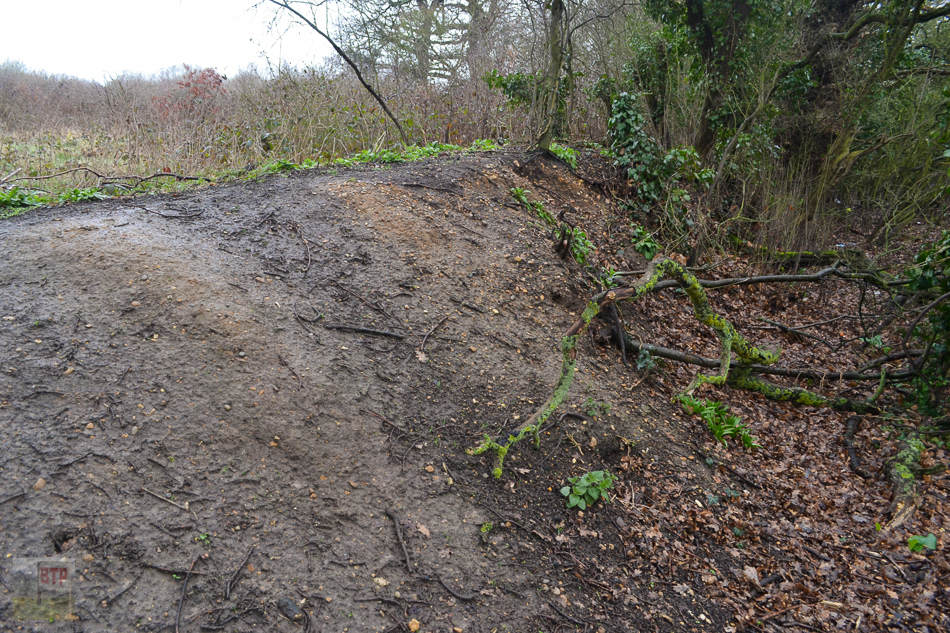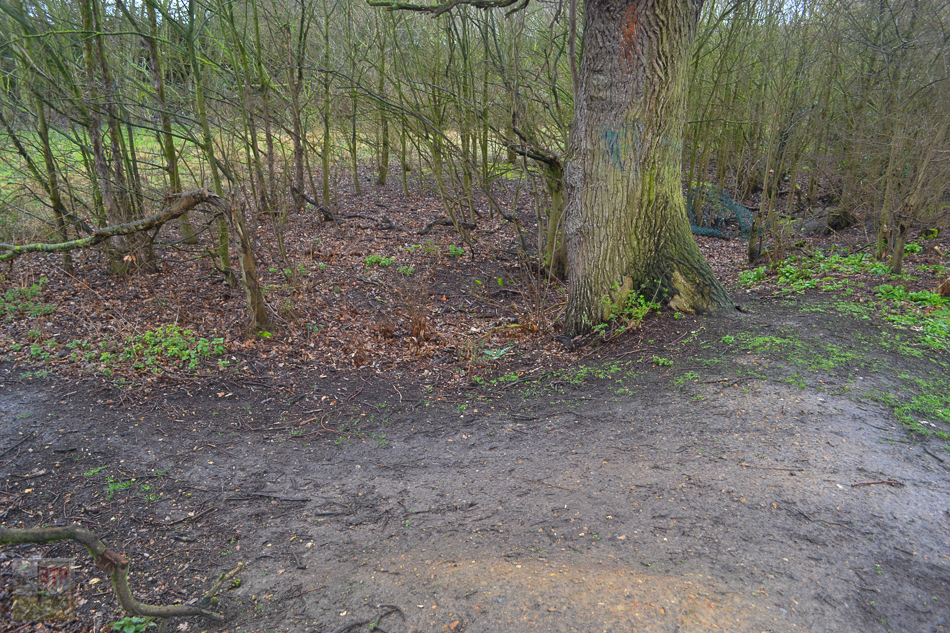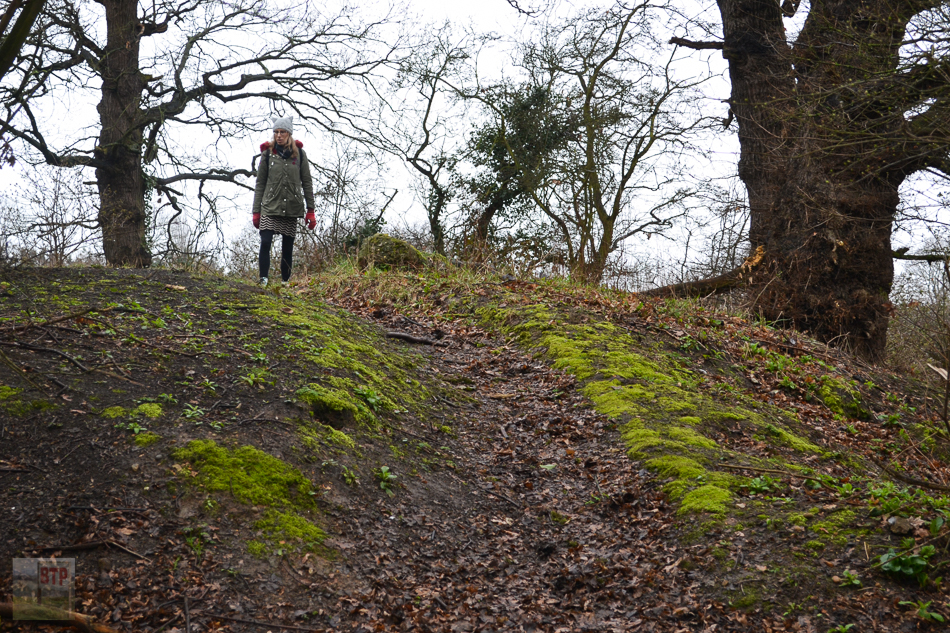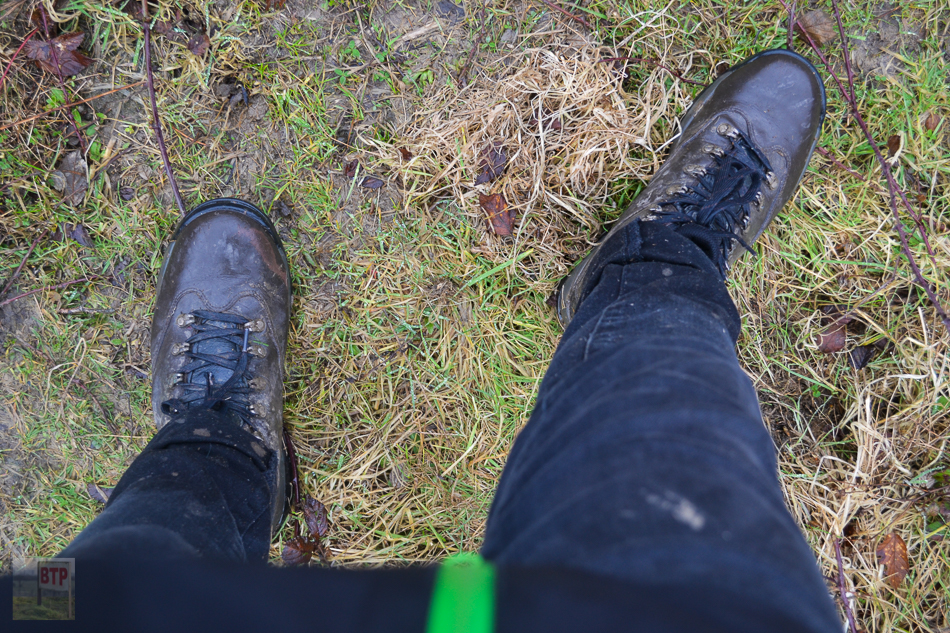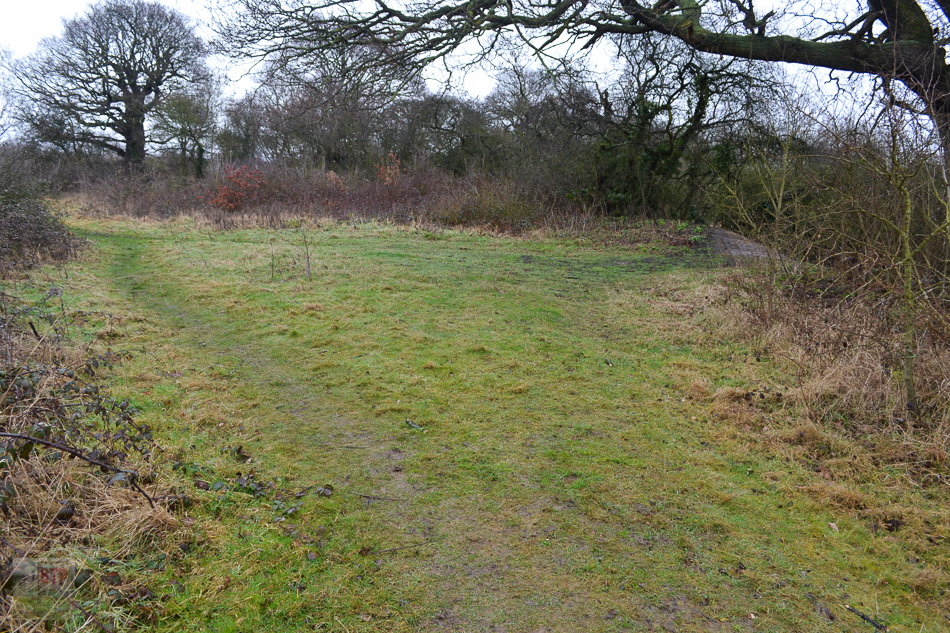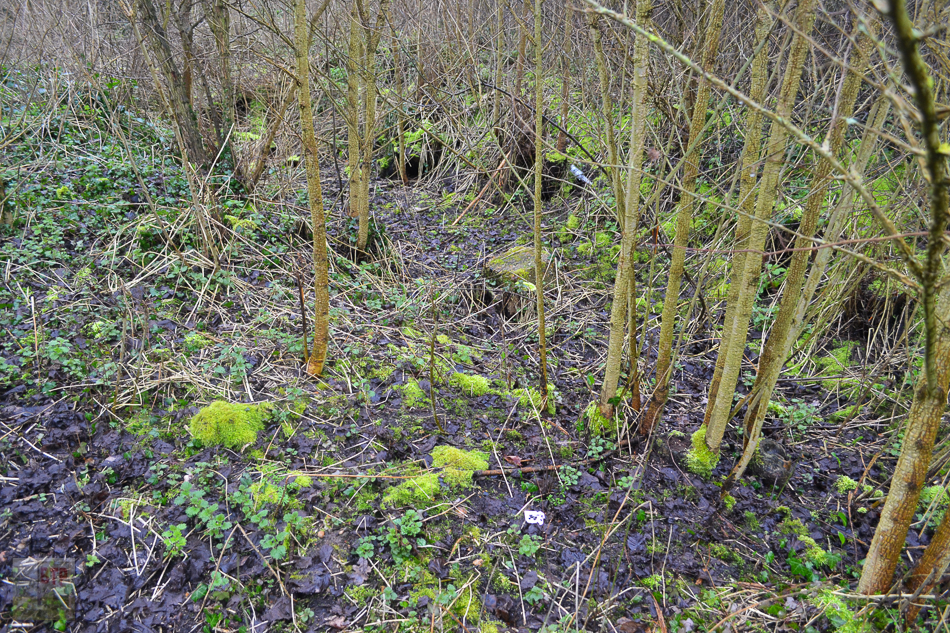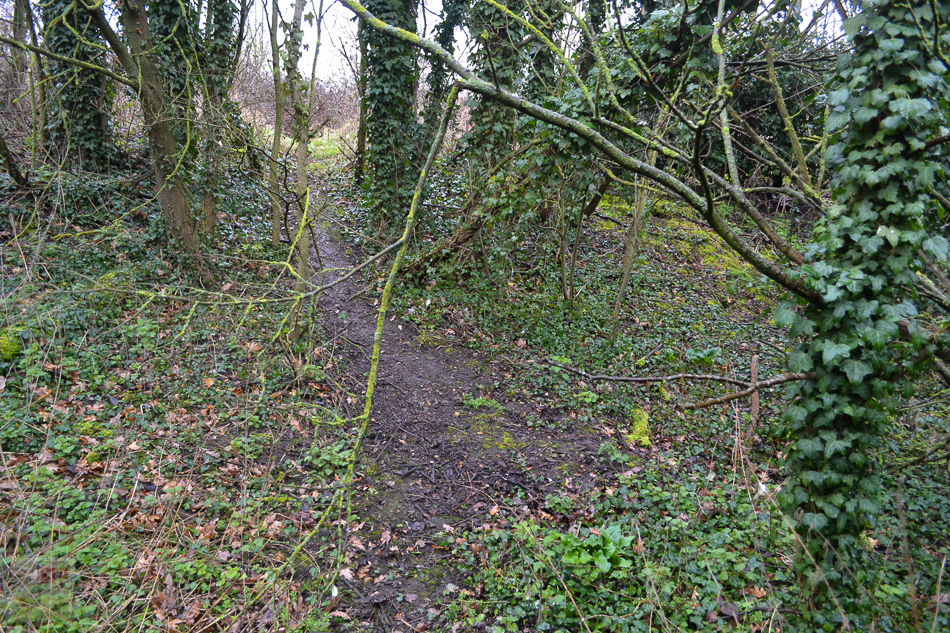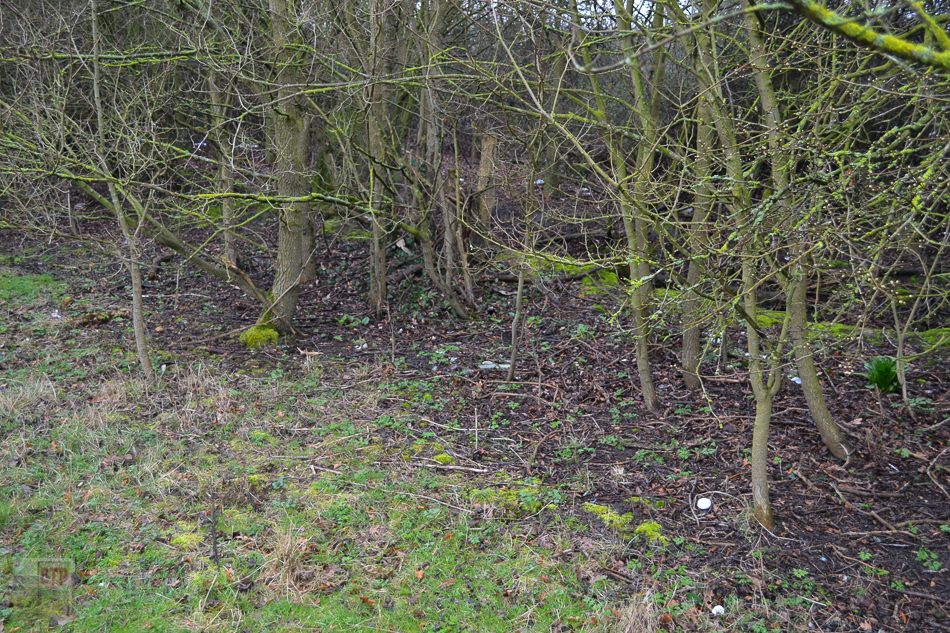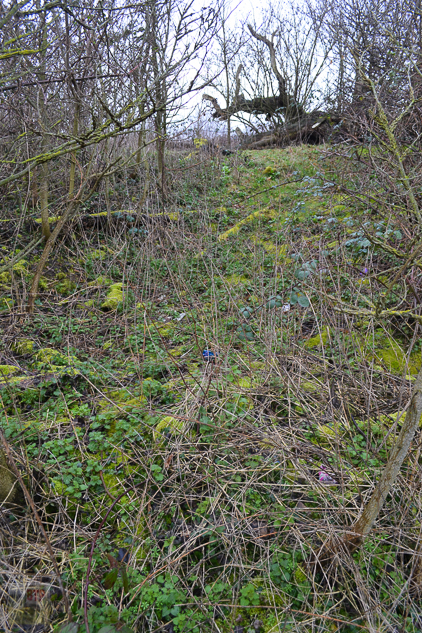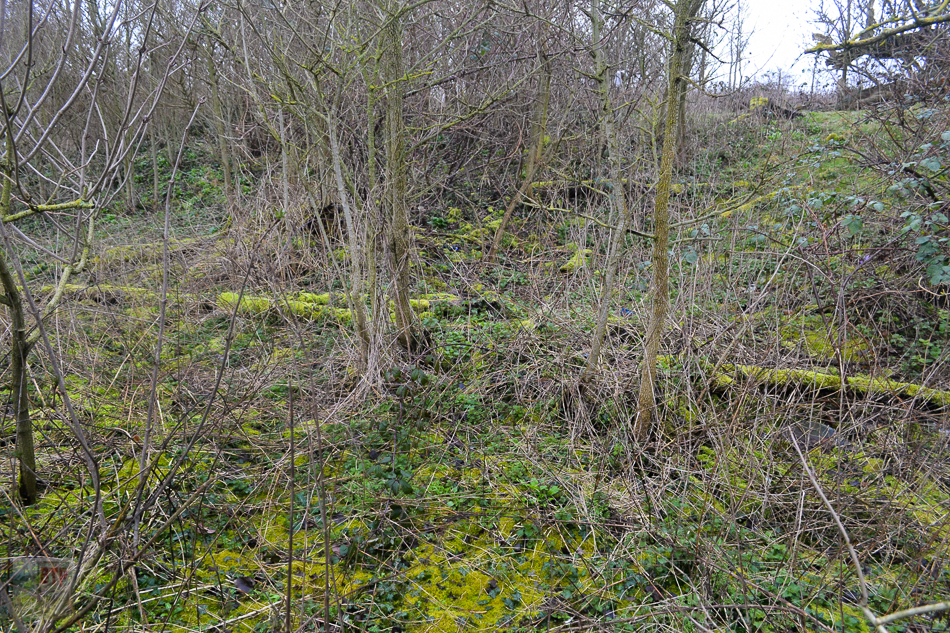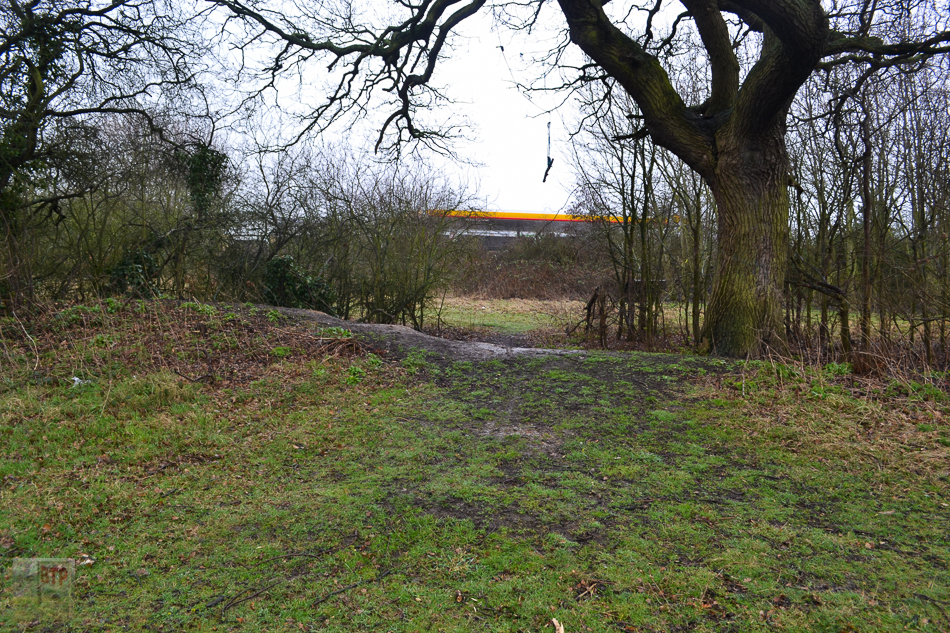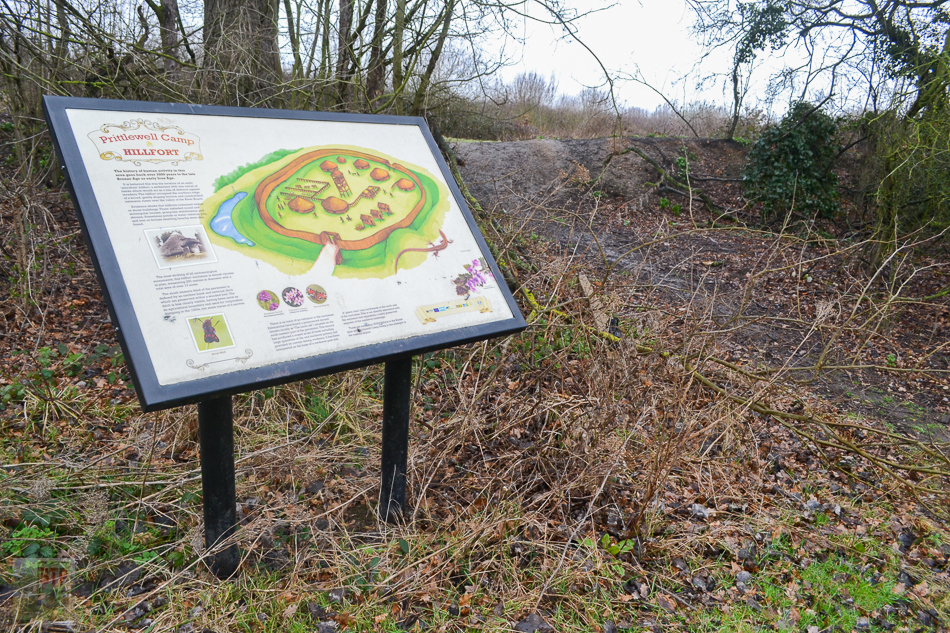
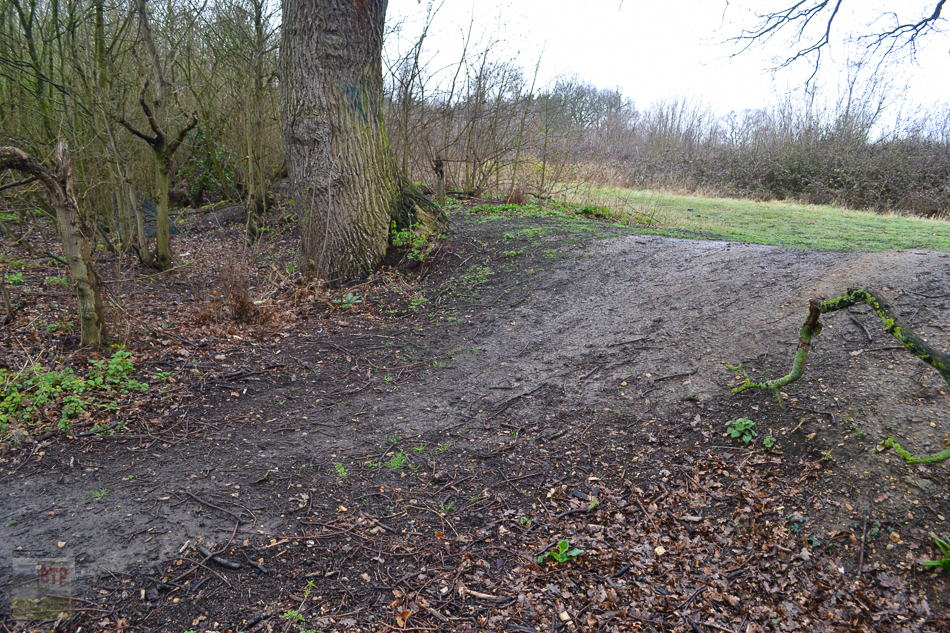
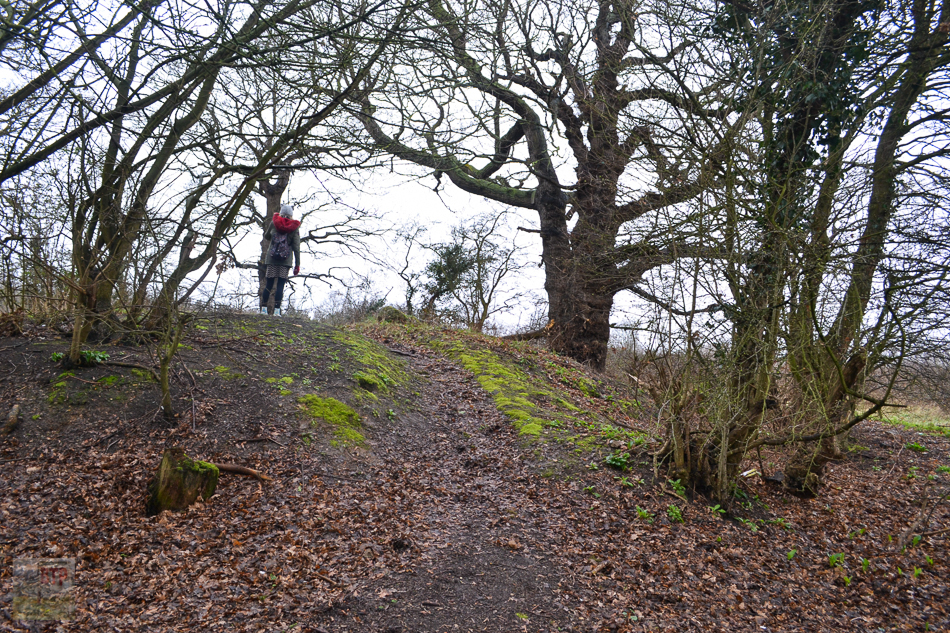
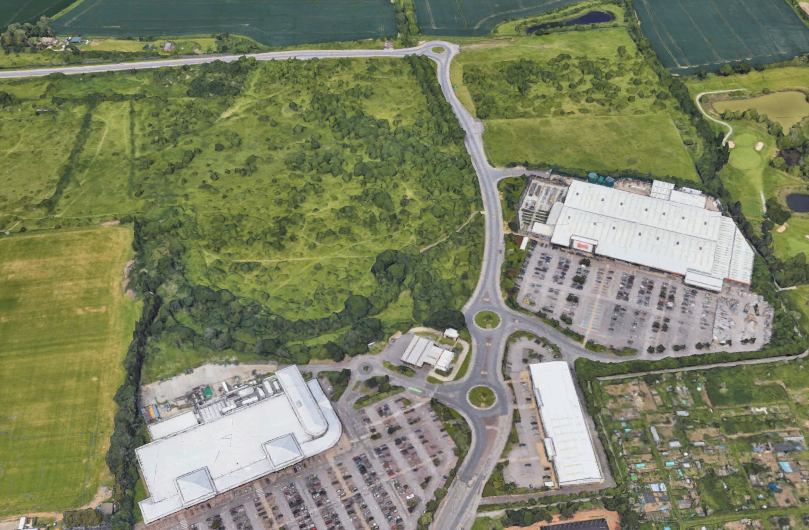
In the fallow land directly South-West of Fossets Way, Prittlewell, lies an impressive Bronze or Iron Age circular hillfort dating from somewhere between the 8th to 5th century BC. The 250 meter-in-diameter fort is extremely rare and of national importance; it is designated a scheduled monument. It would have been a fortified settlement containing domestic buildings, yet situated on a defensible position surrounded by a moat with views across the River Roach. The site is quite overgrown today, although its potential as a vantage-point can just be made out with views between the shrubbery.
The enclosure’s south-western perimeter is clearly traceable by an earthen bank and ditch which has now become wooded. This ditch was recut as an agricultural boundary in recent history, and a small southernly section was used for Corporation dumping in the 1920s. The northern and eastern perimeter is less clear today due to ploughing. No trace of an entrance to the enclosure has been found in archeological surveys, although a small higher mound (20m diameter), known as the ‘Look-Out’, remains clearly in the South-Eastern edge of the settlement. This is believed to be the base of a medieval post mill built to take of the raised positions high winds, speculated after the discovery of medieval tiles and pottery on the site. Post mills were built from the 12th century onwards, and would have been made out of timber. No traces of the structured on the hillfort site have been uncovered, suggesting they were all wooden. A medieval ‘green lane’ also runs northwards to north east of the enclosure.
Today, the site is a real hidden gem amongst Southend’s colourful history. Of course, Southend-on-Sea is a recent town which cropped up in the early-modern era. Prittlewell to the north is a much older town with Iron Age origins. Whilst the Prittlewell Prince and the excavation of his tomb is well-remembered, Prittlewell Camp is a much more secluded yet still highly visible piece of heritage. Perhaps this is from where the original town of ‘Southend’ emerged thousands of years ago. The site makes a pleasant walk through fallow field and wood behind Waitrose and B&Q. It’s good to see it has two information boards in place commemorating the site at its South-Eastern most highly-visible section, featuring an artist’s impression of the site (pictured).
Thanks to Merline Evans for helping research and explore this site.
Sources:
https://historicengland.org.uk/listing/the-list/list-entry/1017515
http://www.gatehouse-gazetteer.info/English%20sites/3301.html
This entry was posted in Location Report
